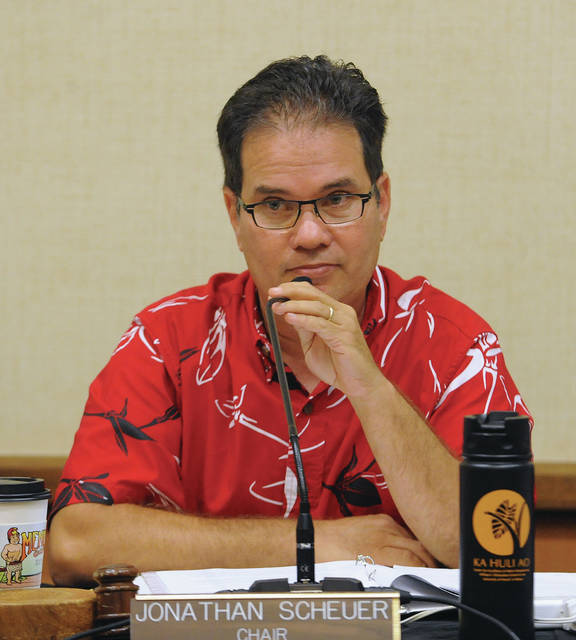KAILUA-KONA — A representative for the developer behind a planned 398-lot residential subdivision in South Kohala repeatedly committed on Wednesday to completing the project that has gone undeveloped for the past decade.
Arch Ltd. vice president Valery Grigoryants, testifying before the state Land Use Commission at a meeting Wednesday, said he had only last year learned of conditions attached to the 731-acre Waikoloa Highlands project and vowed to keep a close eye on the project going forward.
Arch Ltd. is the 100-percent owner of Vitoil Corp., which itself is the 100-percent owner of Waikoloa Highlands Inc.
“I do not waive any responsibility; I accept full responsibility,” Grigoryants told the commission through an interpreter. “I just regret that we discovered things too late.”
The state Land Use Commission is weighing whether Waikoloa Highlands Inc. should keep the rural district classification it received in 2008 or whether to revert the land to an agricultural classification. The commission in an order to show cause issued in July identified a dozen conditions relating to issues like affordable housing and transportation that the commission suspects the developer of not meeting.
But Grigoryants on Wednesday said the project had been hindered by a former director of the project, Stefan Martirosian, who is now out of the company.
“Me and my brother communicated with him almost every day,” Grigoryants said in response to a question about oversight over the former director. “And so when we communicated, he never told us details of actually what was going on with the project. He would tell us that everything is good, the work was significant, that everything was good.”
Grigoryants said Martirosian was fired from Waikoloa Highlands in 2016, and he only learned of the 2008 decision and order and its associated conditions the following year.
He said the company has appointed a new director, Natalia Batichtcheva, and have also arranged for $45 million in financing to complete the project.
“I promise that I will personally control this project,” he said, “and if the committee makes a favorable decision, I promise that we will complete the project.”
The company has also brought on Hilo consultant Joel LaPinta, who also testified during the hearing.
LaPinta started working with Waikoloa Highlands in June, he said, and that so far about $900,000 worth of engineering work has been completed with another $670,000 worth of additional work still to be done.
He said groundbreaking could potentially come in about 30 months depending on the market.
Asked directly whether the project is feasible, he replied he believed it was.
He also responded to concerns that the land was being held onto for speculative reasons, saying he didn’t believe that to be the case, referencing the amount of work that has already gone into engineering and working with the State Historic Preservation Division on archaeology at the site.
In response to a question from deputy attorney general Dawn Apuna of the Office of Planning, he said there hasn’t been any infrastructure built since the 2008 decision and order.
LaPinta also said in his testimony he thinks the environmental studies and archaeology study were still viable, a response which provoked questions from commission chair Jonathan Likeke Scheuer, who asked LaPinta whether he was aware that the State Historic Preservation Division had revised its rules for archaeological inventory surveys since the study associated with this project was conducted. LaPinta said he was not.
And while LaPinta said that, in his talks with a water company, they believe they can supply water to the project for the first phase, those conversations didn’t encompass the full project.
Regarding the environmental impact statement, Scheuer referenced a 2010 Supreme Court of Hawaii case, Unite Here! Local 5 v. City and County of Honolulu, in which the court determined that an environmental impact statement “cannot be relied on reasonably for an indefinite period of time.”
The final environmental impact statement for Waikoloa Highlands was issued in 2007.


